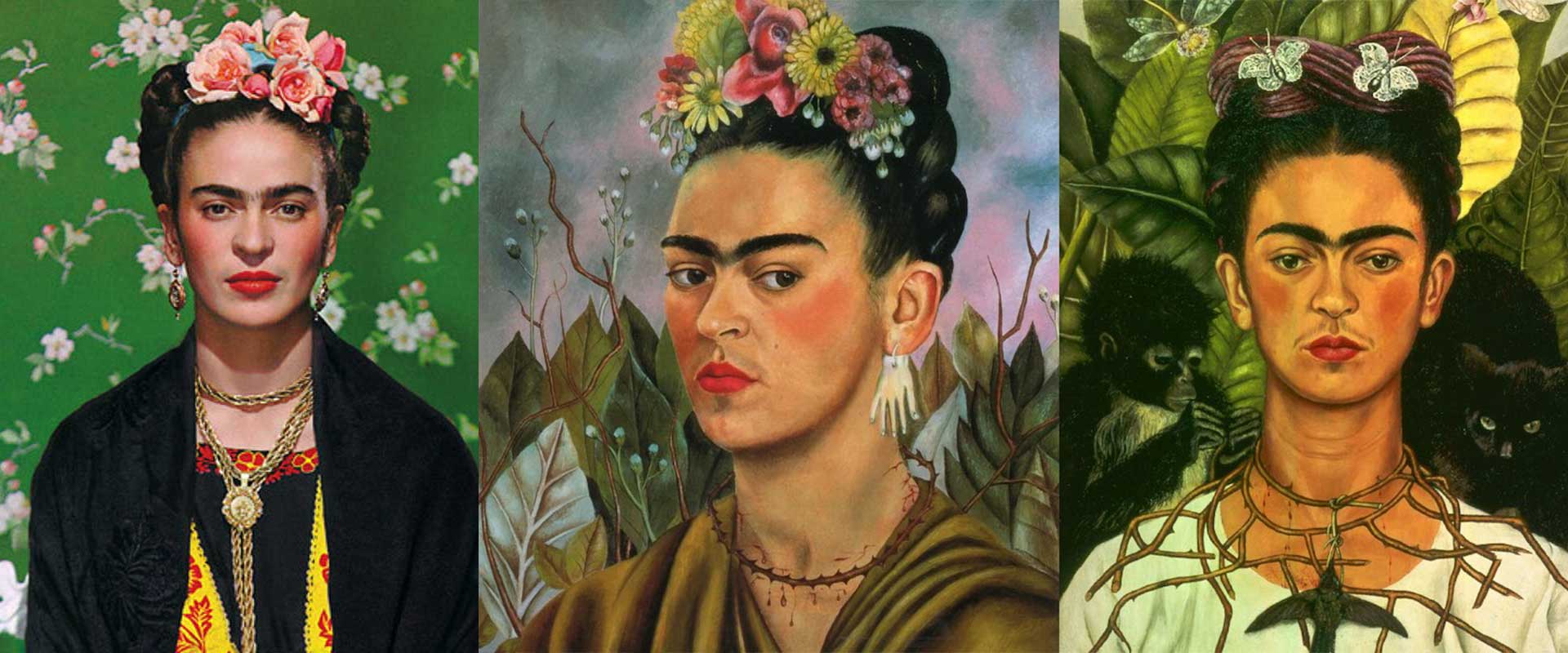Frida Kahlo’s image is inseparable from the vibrant flower crowns that often graced her head. More than decorative accessories, these floral arrangements were deeply symbolic — blending cultural heritage, personal identity, and artistic expression. They transformed her self-portraits into visual narratives, expressing pride in her Mexican roots, defiance against societal expectations, and a connection to nature that echoed through her art. Visitors to the Frida Kahlo Museum can still see the original flowers and headpieces that became part of her personal iconography.
No products found.
Flowers in Mexican Tradition
In Mexico, flowers have long carried cultural, spiritual, and political meaning. They appear in religious festivals, Day of the Dead altars, weddings, and community celebrations. Kahlo’s crowns often featured marigolds, bougainvillea, gardenias, and roses, each with its own symbolic weight — from the marigold’s association with life and death to the bougainvillea’s vibrant resilience. By wearing them, Kahlo embodied the essence of Mexico’s natural beauty and its deep relationship with the cycle of life.
A Political and Cultural Statement
Just as she used traditional Tehuana dress to align herself with the Mexicanidad movement, Kahlo’s flower crowns celebrated indigenous culture and rejected European beauty ideals. In the 1930s and 1940s, elite society in Mexico often favored Parisian hats and hairstyles. By choosing flowers instead, Kahlo embraced a distinctly Mexican aesthetic, asserting her identity both at home and abroad. When traveling internationally, she wore her crowns as visual ambassadors of her homeland, much like when she appeared at exhibitions later commemorated in Visiting Casa Azul.
Symbolism in Her Self-Portraits
Kahlo’s self-portraits often feature her adorned with large floral headpieces. These were not random decorative touches — they served as layered metaphors:
- Fertility and vitality: Flowers, in full bloom, symbolized life, creativity, and the feminine spirit.
- Nature as identity: Kahlo positioned herself as one with the natural world, integrating plants and animals into her visual language.
- Strength in beauty: The boldness of her crowns reflected resilience, challenging the fragility often associated with femininity.
A Tool for Self-Image and Transformation
Beyond symbolism, flower crowns offered Kahlo a way to shape her public image. They drew the eye upward, framing her face like a living halo, distracting from her physical pain and the medical devices she sometimes wore beneath her clothes. This was fashion as self-empowerment — transforming personal hardship into artistic presentation.
Enduring Influence on Fashion and Art
Kahlo’s crowns have inspired countless designers, stylists, and artists. Modern fashion editorials, runway shows, and even wedding trends have borrowed her floral headpiece style. Festivals such as Día de los Muertos often see attendees wearing crowns reminiscent of hers, celebrating both cultural tradition and Kahlo’s enduring influence. Her crowns also appear in contemporary art exhibitions, reinforcing her role as both muse and icon.
The Legacy Preserved
Many of Kahlo’s original headpieces, along with photographs and paintings that feature them, are preserved at Casa Azul. Seeing them up close reveals the craftsmanship — from carefully wired stems to the choice of blooms based on seasonal availability — and reminds visitors that each crown was a deliberate artistic creation, as intentional as her brushstrokes.
No products found.
Conclusion
Frida Kahlo’s flower crowns were far more than a fashion accessory. They were cultural emblems, political symbols, and personal statements woven into the fabric of her identity. By wearing them, she celebrated Mexico’s botanical heritage, elevated indigenous traditions, and transformed nature into a visual language of resistance and beauty. Today, they remain a lasting part of her legacy — a crown not just of flowers, but of meaning.





